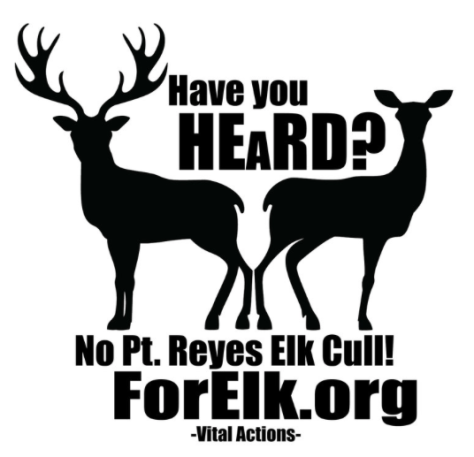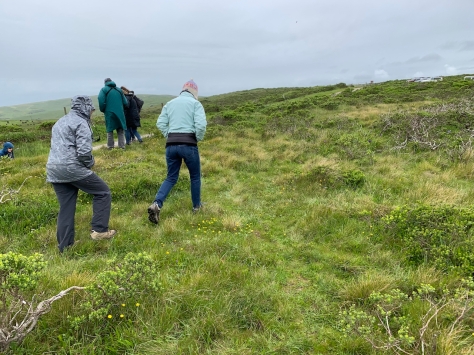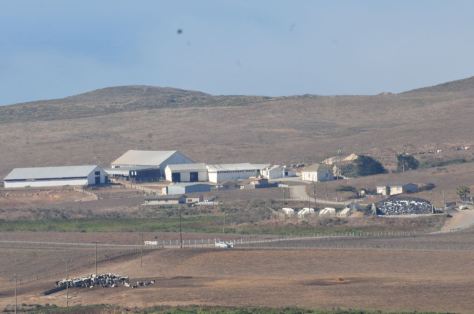
POINT REYES, California— The National Park Service closed its public comment period on a proposed planto shoot native tule elk in Point Reyes National Seashore to make room not only for beef and dairy cattle, but for new expanded uses that will include sheep, goats, pigs, and chickens, and row crops in the Seashore. This is a very bad precedent for all of our national parks and monuments.
Numerous conservation groups, including Western Watersheds Project, Resource Renewal Institute, For Elk, Conservation Congress, Wilderness Watch, Sequoia ForestKeeper, White Shark Video/Shame of Point Reyes, John Muir Project, and Ban Single Use Plastics, as well as many concerned former National Park Service employees and individuals, are opposing the Park’s current preferred alternative, which would extend Ranchers’ lease-permits for decades. Extensive comments on the draft Environmental Impact Statement (DEIS) were sent in by the groups asking for Alternative F—the No Ranching alternative that would restore native tule elk to more of the Seashore.
Yet questions of how many members of the public are actually being heard has arisen.
Since Point Reyes National Seashore was established in 1962, the efforts to gradually remove cattle from the park have been ongoing, although at times so prolonged that park visitors have become used to seeing herds of dairy and beef cattle graze on the fog-shrouded grasslands.
But the original intent of Congress was to restore these coastal cliffs and ridges back to a natural state for the enjoyment of the public. Ranch-leases were supposed to be monitored to make sure livestock grazing did not impair the natural resources of this special place–and we have recently found much impairment.
Barbara Moritsch, ecologist, author, and former botanist for the National Park Service at Point Reyes National Seashore explains, “Neither Point Reyes National Seashore nor the northern district of Golden Gate National Recreation Area were preserved as national parks to perpetuate cattle grazing and dairying. The ranches were purchased by the government and the ranchers were given more than adequate time to move elsewhere. The National Park Service now has an unprecedented opportunity to end ranching on our public lands in these parks–doing anything else would be a grave disservice to the American people, as well as to the incredible diversity of native plants and wildlife that actually belong on these lands.”
The proposed park management plan allows destructive levels of livestock grazing, silage growing and mowing of native vegetation to continue on 28,000 acres of national park lands in this treasured Pacific Coast landscape, despite the myriad known adverse impacts grazing has on coastal prairie, riparian systems, springs, wetlands, and coastal dune vegetation.

The 1916 Organic Act that formed the National Park Service mandated that natural resources on park lands shall not be impaired. The Point Reyes National Seashore legislation specifically mandates that this special coastline be “protected” and “restored.” Damaging livestock grazing, however, has been allowed to persist for decades, and the damage to the high-value resources of the Seashore has been ongoing and worsening.
“I have seen coho salmon streams eroded from heavy trampling by the hooves of beef cattle, native bunchgrasses grazed out of existence, and noxious weeds spread across this once lush park,” said Laura Cunningham, California Director of Western Watersheds Project. “This could be the Yellowstone of the Pacific Coast with elk and wildlife roaming freely, instead of more beef and dairy cattle.” Cunningham grew up in the Bay Area and has hiked and watched the elk since the 1980s at Point Reyes National Seashore.

In contrast to the vast herds of cattle, there are only 124 free-roaming native tule elk in the Drake’s Beach herd. Elk migrate into cattle ranches, tangle with barbed wire fences, and sometimes become injured. Yet instead of reducing the livestock or eliminating them completely, the park is proposing to haze elk out of the cattle pastures or even “lethally removing them.”
That’s when San Francisco resident Diana Oppenheim made her move. “It’s shocking to me that the park would kill elk, and so many cows would be allowed in this beautiful national seashore.”

Documentary filmmaker Skyler Thomas agreed. “What I witnessed didn’t belong anywhere in a compassionate universe, but it certainly had no place within a national seashore renowned for its beauty, scenery, and wildlife. It was like taking a black marker and scribbling all over the Mona Lisa. The natural wonders of the seashore are rare. Humans exploiting animals and the planet for profit is not. Recognition of this fact is the very reason this seashore was created.”

Oppenheim, who had been a park volunteer helping to restore native dune rare plants at Point Reyes National Seashore, formed a grassroots group For Elk in order to get the public more involved. Thomas, of White Shark Video, teamed up to start making documentary videos filming the cattle damage in the park, including a longer documentary: The Shame of Point Reyes. The groups actively volunteered for months to engage the wider public and educate them about this elk controversy, hosting film screenings, tables at food festivals, panel discussions, and protests at public meetings. The educational push was a success, and many more Bay Area people became aware of the plight of the tule elk at Point Reyes. For Elk volunteers garnered nearly 700 signed comment forms from people who often added personalized hand-written sentences to their comments. Oppenheim collected the 700 comments and handed them in a large box in person at the park headquarters.
Yet the park service refused to accept these comments, causing consternation among elk advocates.
Questions abound about how far the National Park Service can use its discretion to limit public comments under the National Environmental Policy Act. For instance, other federal agencies such as the U.S. Forest Service and Bureau of Land Management will accept “bulk” comment forms collected by a group, and at least count them as one similar comment. But the form comments are counted. The park service refused to do even this.
The groups and individuals who signed the comment letter demanded that conservation values must be placed first. The proposed General Management Plan amendment being analyzed fails to protect and restore Point Reyes National Seashore and Golden Gate National Recreation Area.
“The National Park Service should be managing the National Seashore for the benefit of wildlife and the natural ecology. Emphasizing livestock ranching while subsidizing welfare ranchers is a takings of public land. Livestock don’t belong on public lands in general and certainly not in a Seashore where fecal matter can get into the ocean. This disastrous plan must be stopped,” said Denise Boggs, Director of Conservation Congress.
Ara Marderosian, Director of Sequoia ForestKeeper, said, “the agency had thirty years to figure out that the National Park should protect tule elk, but instead the Service proposes to be part of the global climate crisis by enabling more livestock grazing on public lands to continue to produce methane and other toxic waste that will foul the water and air of the National Seashore where children play.”
The conservation community seeks to bring back the coastal prairies that once clothed the peninsula and ridgelines, and take down the fences that currently confine the elk. A Final Environmental Impact Statement is due out most likely in November 2019. Oppenheim, Thomas, and the groups Western Watersheds Project and For Elk vowed to keep pushing the park to accept all public comments, and finally end ranching at the Seashore.





Really nice article, Laura. You’d think the NPS would be better than this but they are as rife, top to bottom, with spineless bureaucrats directed from the top by ideologues. I despair.
L
LikeLiked by 1 person
This is a tragedy – apparently the NPS has picked up on how well this works from the BLM! Yes the BLM “accepts” group letters – somehow considering hundreds or thousands as one single opinion is no better than the NPS covering their ears & continuing to subsidize these livestock industries!
Very good article.
LikeLiked by 1 person
Thank you Laura. The film, video evidence, and all the documentation proving the corruption of the park service are available at shameofpointreyes.org
LikeLiked by 1 person